-
 Bitcoin
Bitcoin $105,185.0222
-2.35% -
 Ethereum
Ethereum $2,530.9127
-7.54% -
 Tether USDt
Tether USDt $1.0004
0.02% -
 XRP
XRP $2.1334
-4.79% -
 BNB
BNB $651.2884
-1.72% -
 Solana
Solana $145.3326
-7.75% -
 USDC
USDC $0.9997
-0.01% -
 Dogecoin
Dogecoin $0.1769
-5.64% -
 TRON
TRON $0.2693
-1.64% -
 Cardano
Cardano $0.6325
-7.03% -
 Hyperliquid
Hyperliquid $40.5973
-4.58% -
 Sui
Sui $3.0228
-9.21% -
 Chainlink
Chainlink $13.1589
-8.35% -
 Bitcoin Cash
Bitcoin Cash $433.5167
-0.81% -
 UNUS SED LEO
UNUS SED LEO $9.0344
1.96% -
 Avalanche
Avalanche $19.0874
-8.76% -
 Stellar
Stellar $0.2581
-5.56% -
 Toncoin
Toncoin $2.9795
-6.23% -
 Shiba Inu
Shiba Inu $0.0...01189
-5.12% -
 Hedera
Hedera $0.1556
-7.28% -
 Litecoin
Litecoin $84.5521
-4.68% -
 Polkadot
Polkadot $3.7768
-6.59% -
 Ethena USDe
Ethena USDe $1.0002
-0.02% -
 Monero
Monero $309.8669
-5.04% -
 Dai
Dai $0.9997
-0.02% -
 Bitget Token
Bitget Token $4.5091
-3.15% -
 Uniswap
Uniswap $7.4994
-5.08% -
 Pepe
Pepe $0.0...01080
-10.34% -
 Aave
Aave $282.7576
-6.18% -
 Pi
Pi $0.5644
-9.37%
What is a blockchain fork? The difference between soft fork and hard fork
A blockchain fork, where the protocol diverges into two paths, is crucial for crypto users to understand as it impacts asset functionality and value.
May 29, 2025 at 10:43 pm
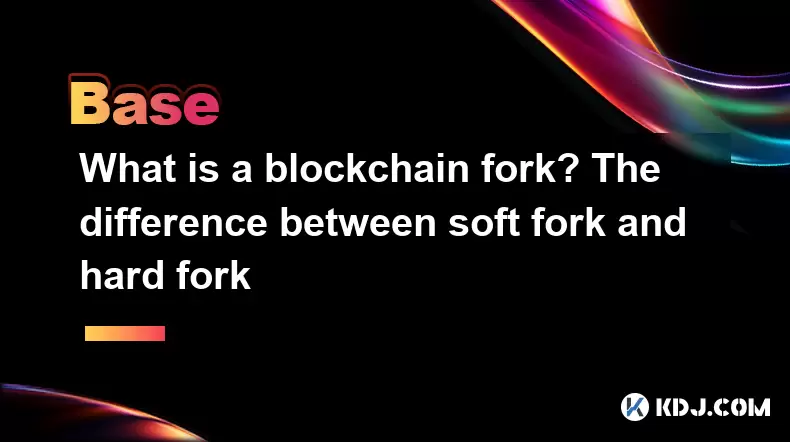
A blockchain fork represents a significant event in the world of cryptocurrencies, where the underlying protocol of a blockchain diverges into two separate paths. This phenomenon can occur due to various reasons, including disagreements within the community about the future direction of the blockchain or the need for upgrades and improvements to the existing system. Understanding the concept of a blockchain fork is essential for anyone involved in the cryptocurrency space, as it directly impacts the functionality and value of digital assets.
What is a Blockchain Fork?
At its core, a blockchain fork is a change in the protocol of a blockchain network that leads to the creation of a new version of the blockchain. This new version can either continue to coexist with the original blockchain or replace it entirely, depending on the type of fork and the consensus of the network participants. Forks are crucial for the evolution and improvement of blockchain technology, allowing for the implementation of new features, enhancements in security, and resolution of critical issues.
Types of Blockchain Forks
There are two primary types of blockchain forks: soft forks and hard forks. Each type has distinct characteristics and implications for the network and its users.
Soft Fork
A soft fork is a backward-compatible change to the blockchain protocol. This means that nodes that have not upgraded to the new version of the protocol can still validate and process transactions on the network. Soft forks are typically used to introduce minor improvements or security enhancements without causing a significant disruption to the network.
- Implementation: Soft forks are implemented through a process where a majority of the network's miners or validators agree to the new rules. Once the new rules are enforced, blocks that do not comply with these rules are rejected, effectively enforcing the new protocol.
- Example: An example of a soft fork is the activation of Segregated Witness (SegWit) on the Bitcoin network in 2017. SegWit aimed to increase the block size limit and improve transaction malleability without requiring all nodes to upgrade immediately.
Hard Fork
In contrast, a hard fork is a non-backward-compatible change to the blockchain protocol. This means that nodes that have not upgraded to the new version of the protocol will no longer be able to validate and process transactions on the network. Hard forks can lead to the creation of a new cryptocurrency if the forked chain continues to operate independently.
- Implementation: Hard forks require a significant majority of the network to upgrade to the new protocol. If the community does not reach a consensus, the blockchain can split into two separate chains, each following its own set of rules.
- Example: A well-known example of a hard fork is the creation of Bitcoin Cash (BCH) from Bitcoin (BTC) in 2017. The fork occurred due to a disagreement over increasing the block size limit, resulting in the creation of a new cryptocurrency.
Reasons for Blockchain Forks
Blockchain forks can occur for various reasons, including technical upgrades, community disagreements, and the need for new features. Understanding these reasons can provide insight into the dynamics of blockchain governance and the decision-making processes within the cryptocurrency community.
- Technical Upgrades: Forks can be used to implement critical technical upgrades, such as improving scalability, enhancing security, or fixing bugs in the protocol. These upgrades are essential for the long-term sustainability and functionality of the blockchain.
- Community Disagreements: Sometimes, forks occur due to fundamental disagreements within the community about the future direction of the blockchain. These disagreements can be over issues such as block size, transaction fees, or the implementation of new features.
- New Features: Forks can also be used to introduce new features or functionalities that are not possible with the existing protocol. These new features can enhance the user experience, attract new users, and increase the overall value of the blockchain.
Impact of Blockchain Forks on Users
Blockchain forks can have significant implications for users, affecting their holdings, the value of their assets, and their ability to transact on the network. Understanding these impacts is crucial for making informed decisions about participating in forks and managing digital assets.
- Asset Value: Forks can lead to the creation of new cryptocurrencies, which can affect the value of the original asset. If the forked chain gains significant support, it can compete with the original blockchain, potentially leading to a decrease in the value of the original asset.
- Transaction Compatibility: In the case of a hard fork, users who do not upgrade to the new protocol may find themselves unable to transact on the network. This can lead to a split in the community and the creation of two separate ecosystems.
- Wallet and Exchange Support: Following a fork, users must ensure that their wallets and exchanges support the new protocol. If they do not, users may face difficulties in accessing their funds or trading on the new chain.
Navigating Blockchain Forks
Navigating blockchain forks requires a deep understanding of the underlying technology and the dynamics of the cryptocurrency community. Here are some steps that users can take to effectively manage forks and protect their assets:
- Stay Informed: Keeping up-to-date with the latest developments in the cryptocurrency space is essential for anticipating and preparing for potential forks. Following reputable sources, participating in community discussions, and monitoring official announcements can help users stay informed.
- Backup Wallets: Before a fork occurs, users should back up their wallets to ensure that they can access their funds on both the original and the new chain. This can be done by exporting private keys or seed phrases and storing them in a secure location.
- Monitor Exchanges: Users should check if their preferred exchanges support the new protocol following a fork. If an exchange does not support the new chain, users may need to withdraw their funds and transfer them to a wallet or another exchange that does.
- Evaluate the Fork: Assessing the reasons for the fork and the potential impact on the network and its users is crucial for making informed decisions. Users should consider factors such as the community support for the fork, the technical merits of the new protocol, and the potential value of the new cryptocurrency.
Frequently Asked Questions
Q: Can I claim the new cryptocurrency created by a hard fork?
A: Yes, if you hold the original cryptocurrency at the time of the hard fork, you may be eligible to claim the new cryptocurrency. However, this depends on the specific rules of the fork and the support of your wallet or exchange. Always check the guidelines provided by the new project and your service providers to understand the process for claiming the new asset.
Q: What happens to my transactions during a fork?
A: During a soft fork, your transactions should continue to be processed as normal, as the new rules are backward-compatible. In the case of a hard fork, transactions may be disrupted if you are using a node that has not upgraded to the new protocol. It is essential to monitor the situation and follow the recommendations of the blockchain's developers and community.
Q: Are blockchain forks good or bad for the cryptocurrency ecosystem?
A: Blockchain forks can be both beneficial and detrimental, depending on the context. They allow for innovation and the resolution of critical issues, which can be positive for the ecosystem. However, they can also lead to community division and confusion, which can be harmful. The impact of a fork largely depends on the reasons behind it and the level of community support.
Q: How can I prepare for a potential blockchain fork?
A: To prepare for a potential blockchain fork, you should stay informed about the latest developments in the cryptocurrency space, back up your wallets, monitor the support of exchanges, and evaluate the reasons and potential impact of the fork. By taking these steps, you can effectively manage the risks and opportunities presented by blockchain forks.
Disclaimer:info@kdj.com
The information provided is not trading advice. kdj.com does not assume any responsibility for any investments made based on the information provided in this article. Cryptocurrencies are highly volatile and it is highly recommended that you invest with caution after thorough research!
If you believe that the content used on this website infringes your copyright, please contact us immediately (info@kdj.com) and we will delete it promptly.
- The Next Floki Inu? Why Arctic Pablo Coin ($APC) Could Be the Next Big Meme Coin
- 2025-06-14 02:50:12
- Top 3 Cryptocurrency Presales to Buy Now in 2025: Nexchain, WeWake Finance, and Aigent Network
- 2025-06-14 02:50:12
- 1976 Bicentennial Quarter Could Be Worth $2.5 Billion
- 2025-06-14 02:45:12
- Trove of 1,720 “Napoléons” gold coins discovered in a modest stone house
- 2025-06-14 02:45:12
- Ethereum (ETH) ETF Inflows Hit 4-Month Highs, BlackRock's iShares Ethereum Trust (ETHA) Dominates
- 2025-06-14 02:40:12
- Bitcoin Price (BTC Price) Fell Down to USD 1,08,000 Today
- 2025-06-14 02:40:12
Related knowledge

What are the private key formats of cryptocurrencies?
Jun 13,2025 at 09:15pm
Introduction to Cryptocurrency Private KeysIn the world of cryptocurrencies, private keys are essential components that grant users control over their digital assets. A private key is a secret alphanumeric string that allows the owner to sign transactions and prove ownership of a corresponding public address. Understanding the different private key form...
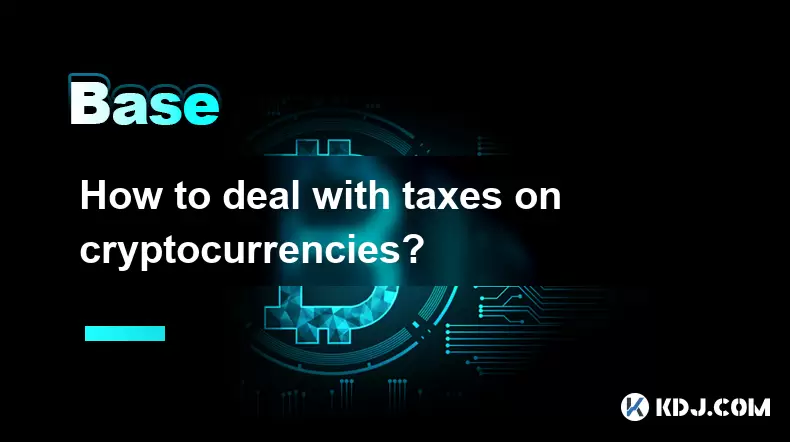
How to deal with taxes on cryptocurrencies?
Jun 13,2025 at 09:49pm
Understanding Cryptocurrency Tax ObligationsDealing with taxes on cryptocurrencies starts with understanding the tax obligations associated with digital assets. Cryptocurrencies are generally treated as property by tax authorities, including the IRS in the United States. This means that transactions involving crypto can trigger taxable events such as ca...
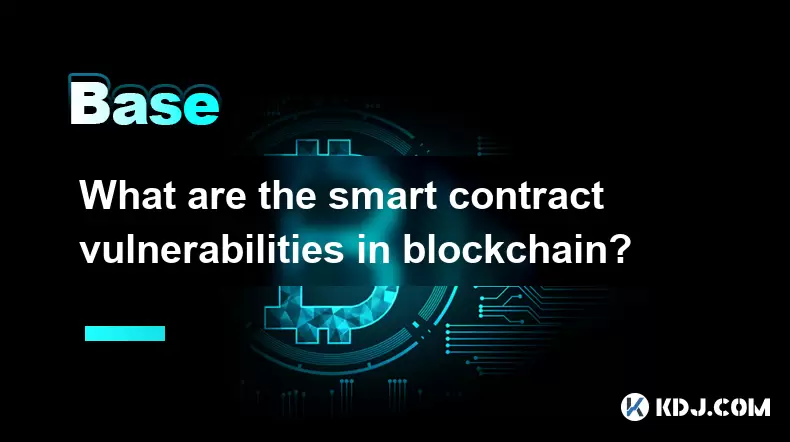
What are the smart contract vulnerabilities in blockchain?
Jun 13,2025 at 07:35pm
Introduction to Smart Contract VulnerabilitiesSmart contracts are self-executing agreements with the terms of the contract directly written into code. They play a crucial role in blockchain ecosystems, especially on platforms like Ethereum. However, despite their benefits, smart contracts can contain vulnerabilities that attackers exploit for malicious ...
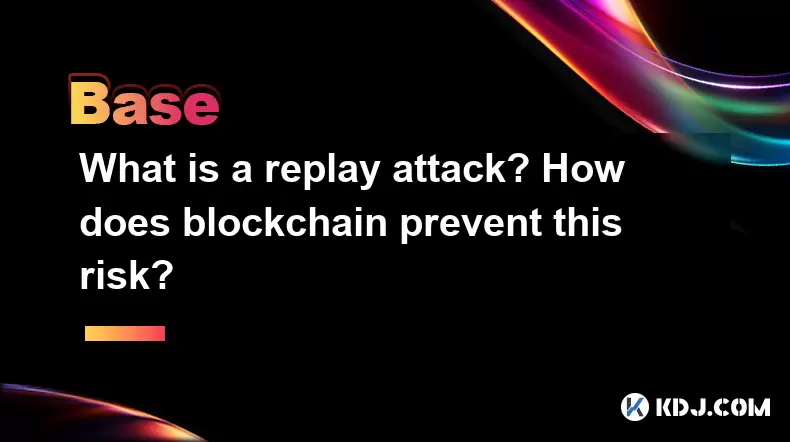
What is a replay attack? How does blockchain prevent this risk?
Jun 13,2025 at 07:57am
Understanding the Concept of a Replay AttackA replay attack occurs when a malicious actor intercepts and retransmits valid data communications to deceive systems into accepting them as legitimate. In the context of digital transactions, this typically involves capturing a valid transaction and resubmitting it without authorization. The goal is often to ...

What is OTC trading in cryptocurrency? Which investors are suitable?
Jun 13,2025 at 01:36am
Understanding OTC Trading in CryptocurrencyOTC (Over-The-Counter) trading in cryptocurrency refers to the direct, private exchange of digital assets between two parties without using a centralized exchange platform. Unlike traditional exchange-based trading where buyers and sellers are matched publicly, OTC trades occur off-exchange and are typically fa...
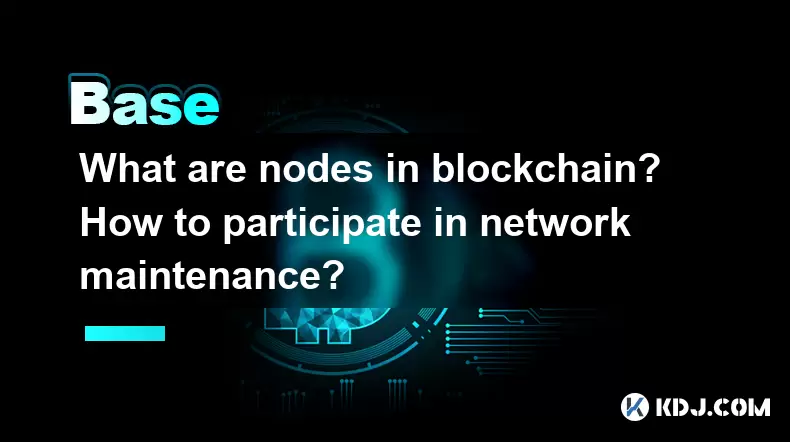
What are nodes in blockchain? How to participate in network maintenance?
Jun 10,2025 at 09:35pm
Understanding Nodes in BlockchainIn the realm of blockchain technology, nodes serve as the foundational building blocks that enable decentralized networks to function. A node is essentially a device—often a computer or server—that participates in the network by storing and validating data. Each node contains a copy of the entire blockchain ledger, ensur...

What are the private key formats of cryptocurrencies?
Jun 13,2025 at 09:15pm
Introduction to Cryptocurrency Private KeysIn the world of cryptocurrencies, private keys are essential components that grant users control over their digital assets. A private key is a secret alphanumeric string that allows the owner to sign transactions and prove ownership of a corresponding public address. Understanding the different private key form...

How to deal with taxes on cryptocurrencies?
Jun 13,2025 at 09:49pm
Understanding Cryptocurrency Tax ObligationsDealing with taxes on cryptocurrencies starts with understanding the tax obligations associated with digital assets. Cryptocurrencies are generally treated as property by tax authorities, including the IRS in the United States. This means that transactions involving crypto can trigger taxable events such as ca...

What are the smart contract vulnerabilities in blockchain?
Jun 13,2025 at 07:35pm
Introduction to Smart Contract VulnerabilitiesSmart contracts are self-executing agreements with the terms of the contract directly written into code. They play a crucial role in blockchain ecosystems, especially on platforms like Ethereum. However, despite their benefits, smart contracts can contain vulnerabilities that attackers exploit for malicious ...

What is a replay attack? How does blockchain prevent this risk?
Jun 13,2025 at 07:57am
Understanding the Concept of a Replay AttackA replay attack occurs when a malicious actor intercepts and retransmits valid data communications to deceive systems into accepting them as legitimate. In the context of digital transactions, this typically involves capturing a valid transaction and resubmitting it without authorization. The goal is often to ...

What is OTC trading in cryptocurrency? Which investors are suitable?
Jun 13,2025 at 01:36am
Understanding OTC Trading in CryptocurrencyOTC (Over-The-Counter) trading in cryptocurrency refers to the direct, private exchange of digital assets between two parties without using a centralized exchange platform. Unlike traditional exchange-based trading where buyers and sellers are matched publicly, OTC trades occur off-exchange and are typically fa...

What are nodes in blockchain? How to participate in network maintenance?
Jun 10,2025 at 09:35pm
Understanding Nodes in BlockchainIn the realm of blockchain technology, nodes serve as the foundational building blocks that enable decentralized networks to function. A node is essentially a device—often a computer or server—that participates in the network by storing and validating data. Each node contains a copy of the entire blockchain ledger, ensur...
See all articles

























































































